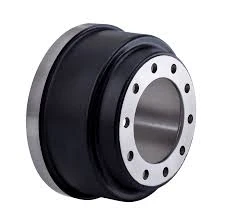
-
 Afrikaans
Afrikaans -
 Albanian
Albanian -
 Amharic
Amharic -
 Arabic
Arabic -
 Armenian
Armenian -
 Azerbaijani
Azerbaijani -
 Basque
Basque -
 Belarusian
Belarusian -
 Bengali
Bengali -
 Bosnian
Bosnian -
 Bulgarian
Bulgarian -
 Catalan
Catalan -
 Cebuano
Cebuano -
 Corsican
Corsican -
 Croatian
Croatian -
 Czech
Czech -
 Danish
Danish -
 Dutch
Dutch -
 Ingliż
Ingliż -
 Esperanto
Esperanto -
 Estonian
Estonian -
 Finnish
Finnish -
 French
French -
 Frisian
Frisian -
 Galician
Galician -
 Georgian
Georgian -
 German
German -
 Greek
Greek -
 Gujarati
Gujarati -
 Haitian Creole
Haitian Creole -
 hausa
hausa -
 hawaiian
hawaiian -
 Hebrew
Hebrew -
 Hindi
Hindi -
 Miao
Miao -
 Hungarian
Hungarian -
 Icelandic
Icelandic -
 igbo
igbo -
 Indonesian
Indonesian -
 irish
irish -
 Italian
Italian -
 Japanese
Japanese -
 Javanese
Javanese -
 Kannada
Kannada -
 kazakh
kazakh -
 Khmer
Khmer -
 Rwandese
Rwandese -
 Korean
Korean -
 Kurdish
Kurdish -
 Kyrgyz
Kyrgyz -
 Lao
Lao -
 Latin
Latin -
 Latvian
Latvian -
 Lithuanian
Lithuanian -
 Luxembourgish
Luxembourgish -
 Macedonian
Macedonian -
 Malgashi
Malgashi -
 Malay
Malay -
 Malayalam
Malayalam -
 Maltese
Maltese -
 Maori
Maori -
 Marathi
Marathi -
 Mongolian
Mongolian -
 Myanmar
Myanmar -
 Nepali
Nepali -
 Norwegian
Norwegian -
 Norwegian
Norwegian -
 Occitan
Occitan -
 Pashto
Pashto -
 Persian
Persian -
 Polish
Polish -
 Portuguese
Portuguese -
 Punjabi
Punjabi -
 Romanian
Romanian -
 Russian
Russian -
 Samoan
Samoan -
 Scottish Gaelic
Scottish Gaelic -
 Serbian
Serbian -
 Sesotho
Sesotho -
 Shona
Shona -
 Sindhi
Sindhi -
 Sinhala
Sinhala -
 Slovak
Slovak -
 Slovenian
Slovenian -
 Somali
Somali -
 Spanish
Spanish -
 Sundanese
Sundanese -
 Swahili
Swahili -
 Swedish
Swedish -
 Tagalog
Tagalog -
 Tajik
Tajik -
 Tamil
Tamil -
 Tatar
Tatar -
 Telugu
Telugu -
 Thai
Thai -
 Turkish
Turkish -
 Turkmen
Turkmen -
 Ukrainian
Ukrainian -
 Urdu
Urdu -
 Uighur
Uighur -
 Uzbek
Uzbek -
 Vietnamese
Vietnamese -
 Welsh
Welsh -
 Bantu
Bantu -
 Yiddish
Yiddish -
 Yoruba
Yoruba -
 Zulu
Zulu
Do modern vehicles still utilize traditional drum braking systems in their designs?
Do Any Cars Still Have Drum Brakes?
In the ever-evolving world of automotive technology, one question that often arises is whether any cars still employ the use of drum brakes. Historically, drum brakes were the norm in the automobile industry, dominating the market for decades due to their cost-effectiveness and simplicity. However, as technology advanced, disc brakes gradually became the preferred choice for most modern vehicles. Nevertheless, drum brakes are not entirely extinct; they can still be found in various applications today.
Drum brakes operate using a brake drum that houses shoes which press against the inner surface of the drum when the brakes are applied. This design allows for efficient slowing or stopping of the vehicle. While they offer certain advantages, such as lower manufacturing costs and the ability to perform well in wet conditions, drum brakes also have limitations. They tend to generate more heat and can lead to brake fade more quickly than their disc counterparts, especially under heavy use. This is one of the primary reasons why manufacturers have shifted toward disc brakes.
Despite these drawbacks, drum brakes are still used in several types of vehicles today. One of the most common applications for drum brakes is in rear-wheel setups of many budget-friendly or entry-level cars. While many modern vehicles feature disc brakes on all four corners, it is not unusual to find drum brakes in the rear of economy cars, compacts, and even some SUVs. This is largely due to cost-saving measures, as drum brakes are cheaper to produce and install.
Moreover, drum brakes continue to find a home in specific automotive segments, such as commercial vehicles and heavy-duty trucks, where the weight and load management can justify their use. In these vehicles, the ability of drum brakes to handle sustained use and their compatibility with certain braking systems can make them a practical choice. Meanwhile, some manufacturers still produce performance vehicles with rear drum brakes, primarily to cut costs without significantly sacrificing overall performance.
do any cars still have drum brakes

Another area where drum brakes flourish is in the aftermarket scene and in some classic cars. Enthusiasts often appreciate the historical and aesthetic value of drum brakes, choosing to maintain or restore vintage vehicles that originally came equipped with this older technology.
It is also worth mentioning that while some vehicles may still use drum brakes, the regulatory environment and consumer preferences are continually pushing the industry towards more advanced braking solutions. Technologies such as anti-lock braking systems (ABS), electronic brake force distribution (EBD), and regenerative braking in electric vehicles are all centered around maximizing safety and efficiency.
Looking ahead, there's little doubt that the trend will continue to favor disc brakes, especially as electric and hybrid vehicles gain traction. That said, drum brakes are still relevant in specific applications where cost-efficiency is paramount, and the vehicle use does not necessitate the high performance that disc brakes provide.
In conclusion, while the prevalence of drum brakes has decreased tremendously in modern cars compared to their heyday, they still remain in use today, primarily in budget-friendly vehicles, certain commercial applications, and vintage cars. Automotive technology continues to advance, leading manufacturers to favor disc brakes. However, drum brakes will likely continue to serve a niche market for the foreseeable future as they hold their place in automotive history.
-
What Are Drum BrakesAħbarijietJul.07,2025
-
Understanding Brake Drum MaterialAħbarijietJul.07,2025
-
Semi-Trailer Brake Drum: A Key Component for Extreme Loads and Long-Distance TransportAħbarijietJul.07,2025
-
Drum Brake Pads for SaleAħbarijietJul.07,2025
-
Brake Drums for SaleAħbarijietJul.07,2025
-
Brake Drum ManufacturerAħbarijietJul.07,2025
-
Aluminum Brake Drums: The Future of High-Performance CarsAħbarijietJul.07,2025
